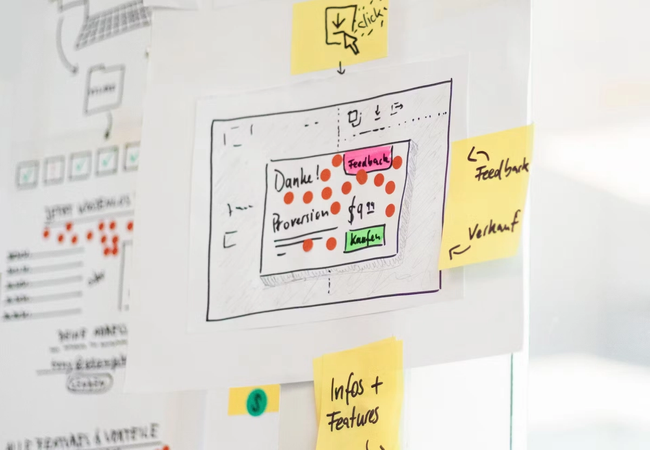
design
The modern design process in the tech industry has evolved to prioritize user needs, adaptability, and swift product iterations. This evolution is primarily driven by the rapid pace of technological change and the increasing importance of user experience. To stay relevant and competitive, companies must not only develop innovative solutions but also validate these solutions quickly with real users to ensure they address genuine needs and pain points.
Enter the concept of design sprints, an approach pioneered by Google Ventures. A design sprint is essentially a five-day process where ideas are conceptualized, prototyped, and tested with users. This methodology is grounded in the belief that designs, products, or services should be user-centered, and that the best way to predict user reactions is to create tangible prototypes and test them. The primary benefits of running design sprints include the rapid validation or invalidation of ideas, significant cost savings by avoiding long-term development of unviable products, and the ability to harness direct user feedback early in the development process.
At Cyces, we've integrated the design sprint methodology seamlessly into our workflow. Collaborating closely with our clients from the onset, we tailor each sprint to address specific product challenges and goals. Through rapid prototyping and user testing, we ensure that our clients' visions are transformed into viable, user-centric solutions in a condensed timeframe. This approach not only accelerates product development but also optimizes its relevance and impact in the market.
Design sprints operate within a condensed timeframe, often spanning just a week. This tight schedule compels teams to cut through the noise, focusing only on pivotal issues. With limited time, teams are pushed to prioritize tasks, ensuring that the most pressing challenges are addressed directly and efficiently.
One of the major advantages of a design sprint is the potential for cost savings. By identifying and solving problems at an early stage, companies can avoid the expensive repercussions of fixing issues later in the development cycle. When compared to traditional development methods, where problems might only surface after significant investment, the proactive approach of a design sprint can result in substantial financial savings.
Design sprints are not just about rapid product development; they also play a crucial role in team alignment. By bringing together cross-functional teams, from designers and developers to marketers and stakeholders, everyone gets on the same page. This collaborative approach fosters a shared understanding of the project's goals and vision, ensuring that all team members are aligned and moving in the same direction.
Design sprints inherently follow an iterative process, allowing teams to test hypotheses and refine solutions in quick succession. This methodology ensures that before major investments of time and resources are made, ideas are validated. By vetting concepts early on, businesses can sidestep the pitfalls of sinking costs into unviable solutions, significantly mitigating financial and operational risks.
One might assume that a tight timeframe stifles creativity, but in the world of design sprints, the opposite is true. The time constraint often acts as a catalyst, pushing teams to think outside the box and brainstorm creatively. Moreover, the sprint process inherently encourages collaboration, bringing together individuals from various backgrounds and expertise. This melting pot of diverse perspectives serves as a breeding ground for innovative solutions that may not emerge in more siloed environments.
Central to the design sprint's methodology is the emphasis on user testing. Instead of making assumptions or basing decisions purely on internal perspectives, products are put directly into the hands of users. This direct interaction offers invaluable feedback in real-time, ensuring that the product aligns with user needs and expectations. By integrating these insights, businesses can make informed product decisions, ultimately leading to enhanced user satisfaction and loyalty.
Design sprints have a unique way of galvanizing a team. When members see their ideas take shape in the form of tangible prototypes, there's a palpable boost in confidence. This materialization of concepts into visible solutions provides a clear sense of achievement. Moreover, the pace of a design sprint ensures swift progress. As milestones are rapidly achieved and the path forward is distinctly charted, team members feel motivated, fostering a positive and proactive work environment.
Design sprints, with their condensed structure and user-centric approach, have revolutionized the product development landscape. At Cyces, we’ve run design sprints for startups and well-established companies, get in touch with us if you want us to conduct one!
Read more:
leveraging tech for
business growth
Cyces.